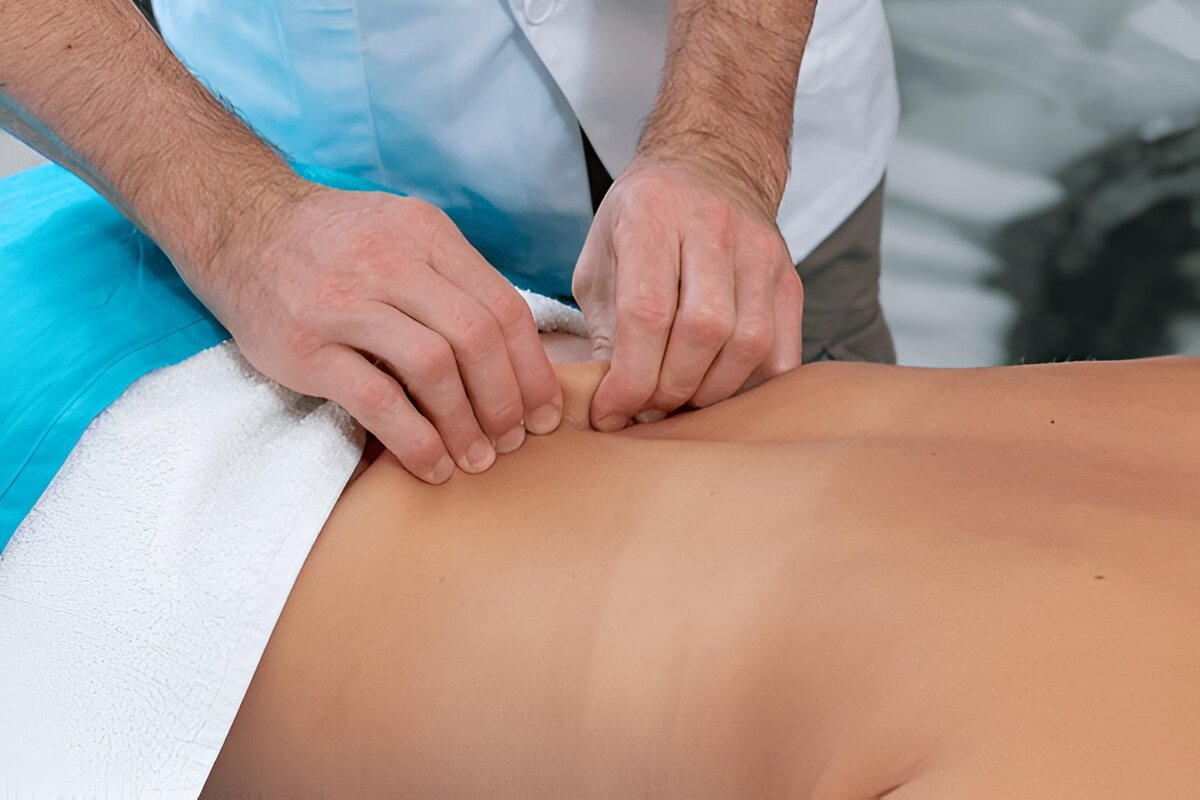Get Proven Spinal Decompression Therapy at Rapid Physiocare
Gentle, targeted spinal decompression therapy to ease pressure, restore mobility, and support long-term spine health at Rapid Physiocare.

Common Causes That Lead to Spinal Decompression
Back pain often comes out of nowhere. It grows quietly, sometimes so gradually that people ignore it until bending, sitting, or lifting suddenly feels more difficult than it should. Many patients who visit us at Rapid Physiocare describe the same pattern: a stiff morning here, a pinched feeling there, and eventually a pain that refuses to settle.
Several common factors increase pressure on the spinal structures. These include:
→ Prolonged Sitting and Poor Posture
→ Conditions Related to the Disc
→ Weak Core and Supporting Muscles
→ Sudden Overexertion
→ Age-Related Wear and Tear

Physiocare Therapy Care and Treatment
Manual Decompression Techniques
These manual techniques involve controlled movements that provide gentle traction. They relieve pressure on the irritated nerves and improve spacing between the vertebrae. The process feels like a slow stretch rather than forceful pulling.
Myofascial Release
When the fascia, or soft tissue around the muscles, is tight, it can limit movement and create more discomfort. In myofascial release, these tissues are softened. Patients often report an immediate feeling of lightness afterward.
Targeted Strengthening
Spine-decompressing exercises are combined with strengthening work to support long-term results. We teach you how to activate deep core muscles and stabilizers, making daily tasks feel easier and reducing flare-ups.
Electrotherapy and Heat Therapy
These methods reduce muscle guarding and allow decompression sessions to be more effective. They also help ease tension around the lumbar region.
Spinal Mobility and Flexibility Training
Spinal stretching exercises are selected very carefully to match the individual case. The objective is to restore normal movement without causing pain and improve tissue quality.
Each step stays within safe and evidence-based physiotherapy care. No aggressive techniques, no dangerous manipulation. Just thoughtful, guided recovery.
How Rapid Physiocare Helps You: 4 Key Benefits
1. Reduced Pressure and Better Comfort
Gentle traction reduces pressure inside the spinal discs. This often helps relieve nerve irritation. Many patients describe a gradual “unloading” sensation that allows them to move more freely.
2. Improved Mobility and Flexibility
When the spine regains space, the movement becomes smoother. Even simple activities like tying your shoes or twisting to look over your shoulder can be easier.
3. Stronger Support System for the Spine
Decompression alone will not suffice. We strengthen the spine with strengthening routines that train the right muscles to share the load. This step is essential to avoid recurrences.
4. Individualized Recovery Without Aggressive Approaches
Our physiotherapists tailor each session to your tolerance. You stay in control. If something feels too strong, we adjust immediately. Comfort and patient confidence always come first.
Therapy Process
Step 1: Assessment and Movement Screening
We will study your posture, flexibility, muscle strength, and nerve response. You will never feel hurried. We take the time to understand what causes your discomfort and how it’s affecting your daily life.
Step 2: Customised Decompression Plan
Your program could include lumbar traction, exercises that decompress the lower spine, and specific stretches that achieve safe spinal decompression. Our physiotherapists explain every step so you feel involved in your own recovery.
Step 3: Manual Therapy and Soft Tissue Release
This could include joint mobilization or myofascial release. These techniques allow the spine to respond better to decompression. It helps break the cycle of muscle tension and pain.
Step 4: Strength and Stability Training
You’ll learn exercises that build resilience. Think of them as long-term insurance for your spine. These exercises are simple enough to do at home but effective enough to make a difference.
Step 5: Monitoring Progress and Making Adjustments
Your plan evolves as you improve. Some patients progress to advanced stability work, while others continue to prefer guided spinal stretching. We make any adjustments to your programme based on real outcomes, not guesswork.
Frequently Asked Questions
Does spinal decompression therapy hurt?
Most patients find it comfortable. The traction is gentle and adjustable. If any step feels too strong, we modify the technique. Our goal is to relieve pressure and not create more discomfort.
How long does recovery take?
Every spine heals differently. Some get quick symptomatic relief after a few sessions, and others require longer programs for more deep-seated changes. Your physiotherapist will outline the realistic timeline based on your assessment.
Are home exercises necessary?
Yes. Exercises that decompress the lower spine maintain the space created during therapy. Simple routines of pelvic tilts, knee-to-chest stretches, and controlled core activation enhance long-term results.
Who is a suitable candidate for spinal decompression?
This is beneficial for individuals with chronic lower back tightness, disc-related symptoms, nerve irritation, or stiffness. A proper assessment will make sure this approach is suitable for you.
Will I need maintenance sessions?
Some patients prefer to come in for occasional sessions, just to remain comfortable, especially if their job involves long periods of sitting. Others maintain the results through a home routine. Your physiotherapist will advise you based on your lifestyle.
Ready to Start Your Recovery Journey?
Experience comfort again and walk with confidence with customized spinal decompression therapy at Rapid Physiocare.

